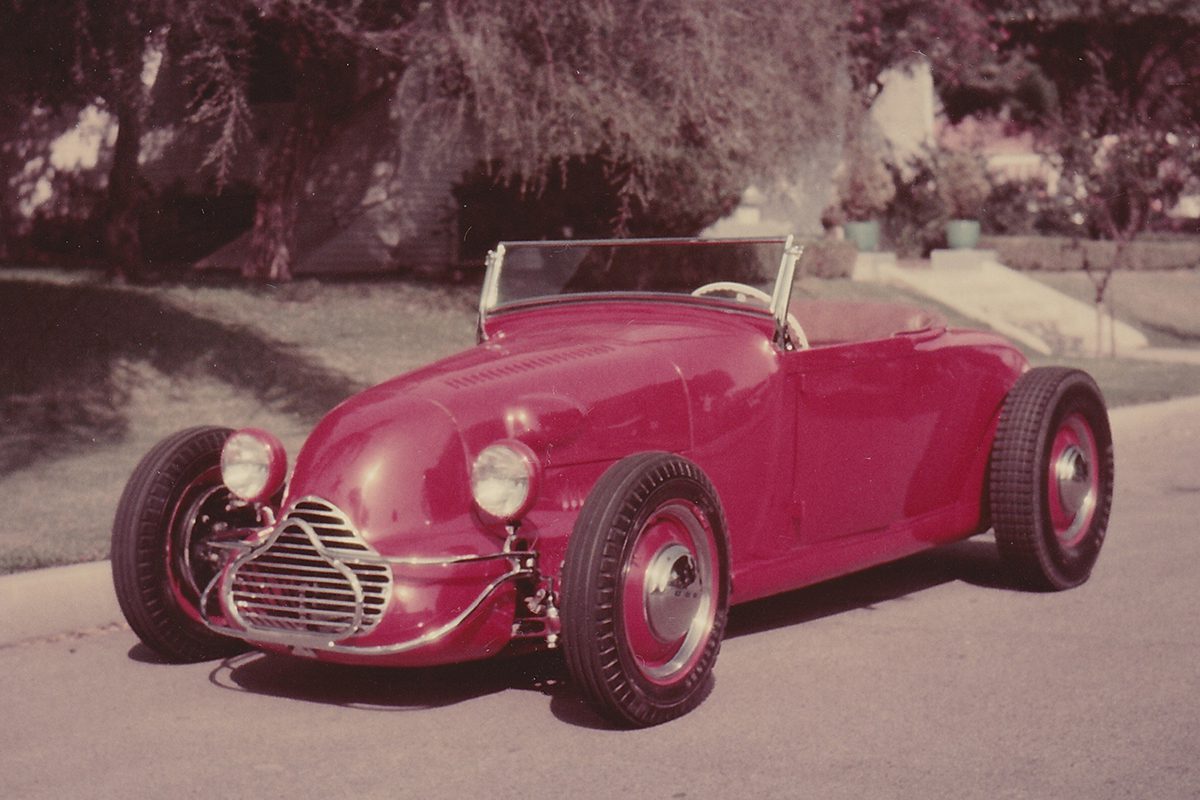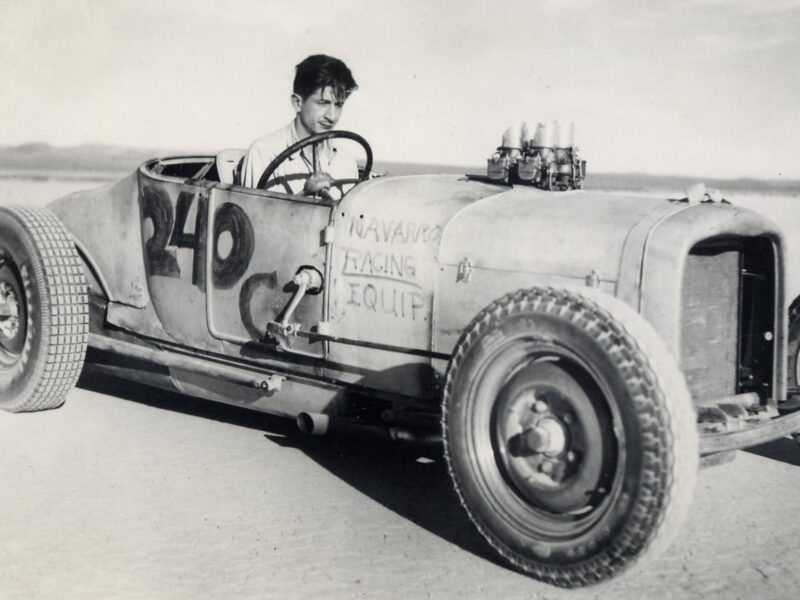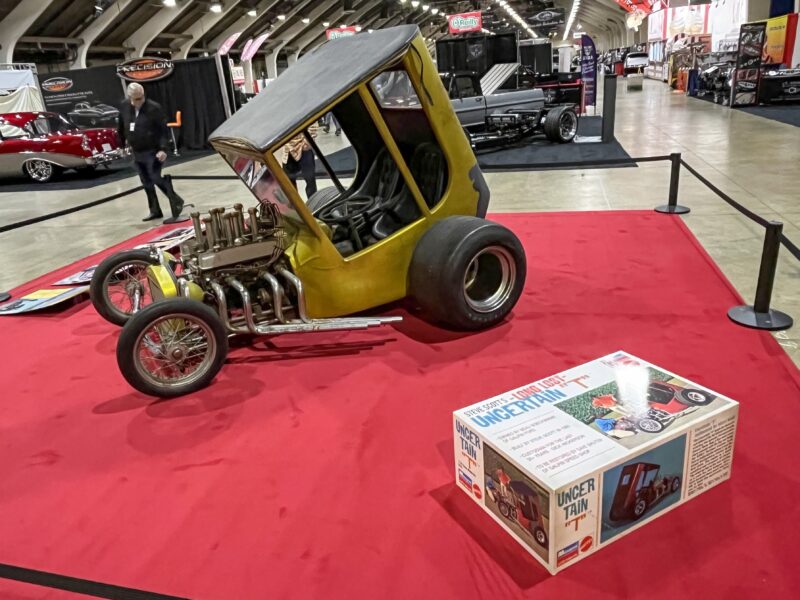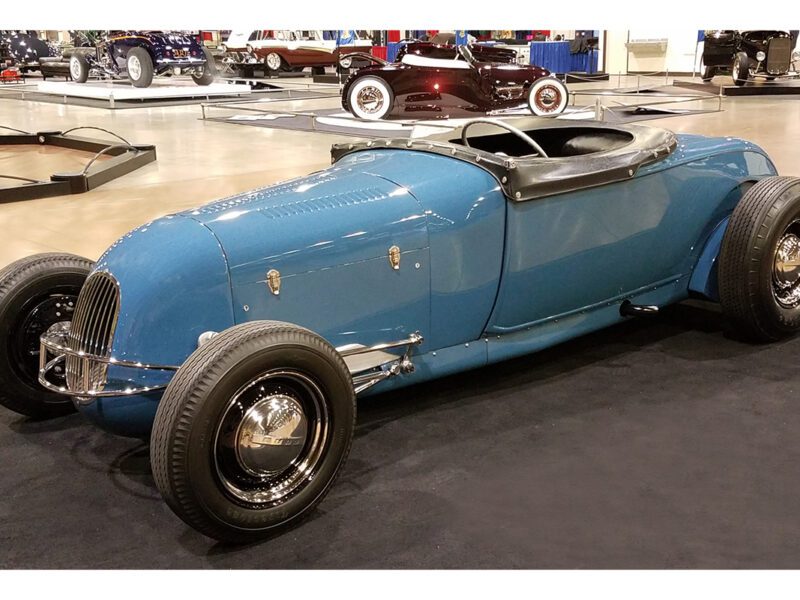Legends in Hot Rodding: The Dick Flint Roadster
If the post-World War II Southern California hot-rod renaissance had a signature ride, it would undoubtedly be the Ford highboy roadster, ’29s and ’32s being the most popular. Many versions have earned our Hot Rod Legend status over the years. Heck, even cartoon character Stroker McGurk prowled the pages of early Hot Rod magazines in a ’29 highboy – leading to the Goodguys Stroker McGurk Award presented at the West Coast Nationals. This time we focus on the Dick Flint roadster.
This isn’t news to readers of this column. Why, just a couple months ago we featured the Bob McGee roadster, one of the legendary all-timers. And this month we focus on yet another iconic roadster, the Dick Flint roadster, a ’29 Model A Ford.
Motor Trend described Flint as a hot rod pioneer, one who learned his craft from other pioneers. He worked for Alex Xydias’ So-Cal Speed Shop and flew the license plate of the Glendale Sidewinders club. He also witnessed firsthand the first Bonneville speed trials in 1949 (the hot rod equivalent of being at Woodstock).
Flint was a big Model A fan, his garage stacked with several roadster bodies. As an admirer of pre-war Indy roadsters, he wanted to build a highboy that paid homage to those distinctive dinosaurs of yesteryear. To create reality from vision, he offered his project to Neil Emory of Valley Custom, a short jaunt from So-Cal in Burbank.
Chalk in hand, Emory roughed out a track-nose shape on the shop floor. Flint gave the thumbs up and Emory – with design help form legendary-journalist-to-be Dean Batchelor – went to work forming the Indy-style snout out of aluminum.
Meanwhile, Flint tackled the rest of the car. To get the lowered stance he desired he Z’d the rear of the frame. He also hand-crafted the grille that would fit inside the track nose and formed the nerf bars that protected it.
Flint also handled the mechanical work. A ’40 Mercury flathead with 3-5/16-inch bore, 4-1/2-inch stroke, Edelbrock 9:1 heads, and a Winfield 1A cam filled the engine bay – enough to propel the roadster to a brisk 143.54 mph at El Mirage. Hydraulic brakes, adapted from a ’46 Ford, reigned in all that power.
Flint’s innate sense of interior design also set the table for hundreds of highboys to come. He tweaked and chromed an Auburn center instrument panel, then squeezed in an array of Stewart-Warner gauges. The seat was swaddled in brown vinyl leather, a comfy perch to grip the modified ’40 Ford steering wheel.
For final bodywork, it was back to Valley Custom, where Emory and Batchelor fit a rolled belly pan and subtly massaged the body’s lines to mirror a ’32 roadster. A brilliant Federal Truck red hue finished off its head-turning persona as a rare and beautiful ride.
It didn’t take long for the editors of Hot Rod and Hop Up to agree. It appeared on the cover of Hop Up in 1951 and 1954, plus a full feature in the May 1952 Hot Rod, including color cover image and multi-page inside spread. The Hot Rod cover was one of the more memorable images of that decade, with the roadster stopped at a crosswalk and its passenger climbing out to chat up an attractive young lady crossing the street.
Flint drove and raced the ’29 for several years before it once again appeared on the pages of Hot Rod – this time in the December 1958 classified ad section. LA Roadsters member Duane Kotoed traded Flint $2,500 for the pink slip.
By the early 1960s, Kotoed had swapped out the Flathead and dropped in a Chevy small-block V8. He drove it to events and cruises until its chassis needed a refresh. He disassembled the entire vehicle with plans to improve its mechanicals.
At about the same time, renowned historic hot-rod restorer Don Orosco was on the lookout for a new project. After months of haggling, Orosco pried it from Kotoed’s reluctant hands. A full-blown restoration followed, looking to put the roadster back to its original Flintonian glory.
Orosco’s restoration wasn’t your usual garden-variety rehab. He was hellbent on time-machining the roadster, in process as well as result. He rebuilt the frame, fabricating pieces that were missing or worn. He used only period-correct parts and employed construction methods similar to those Flint used during its original construction.
The re-done Dick Flint roadster debuted at the 50th anniversary of the Oakland Roadster Show in 1999. It was a standout. Later that year it rolled over the coiffed lawns of Pebble Beach for the second-ever class of Hot Rods at the Pebble Beach Concours d’Elegance. Flint was on hand to watch his 50-year-old beauty win First in Class – plus the Dean Batchelor Memorial Trophy, most appropriate considering Dean’s role in designing and fitting the car’s belly pan and photographing the car for those Hop Up feature stories.
Fourteen years later, in 2013, Flint, Orosco and the roadster were in New York. The ’29 was being honored in the RM/Sotheby’s Art of Automobile collection, a show that included an auction. When the final bid was in for the Dick Flint roadster it sold for the then-shocking sum of $577,500. More than half a million dollars!
In other words, a legendary price for a legendary car.





